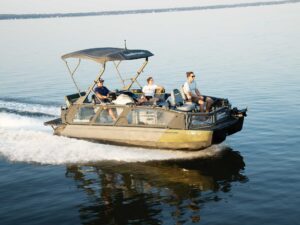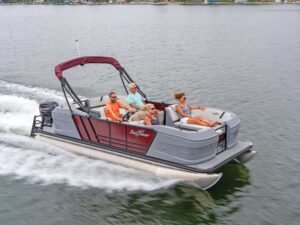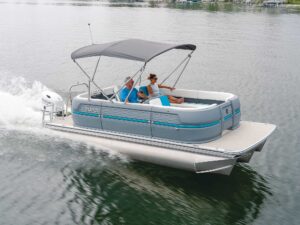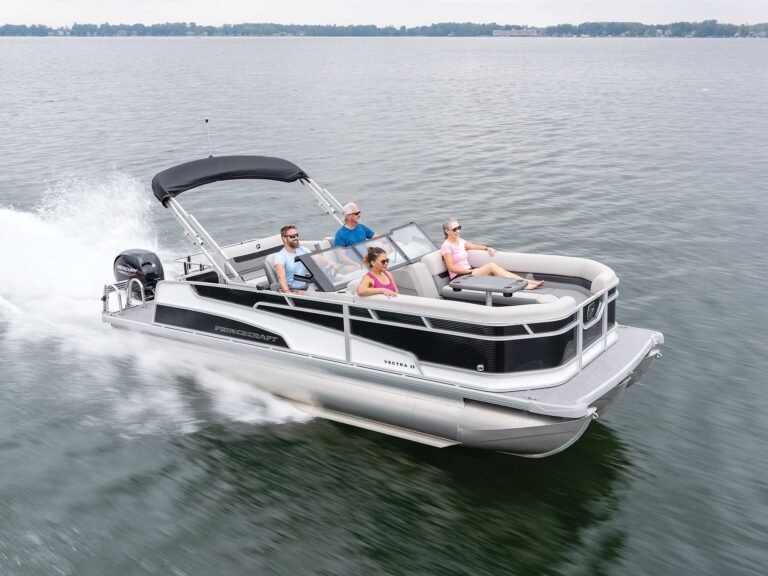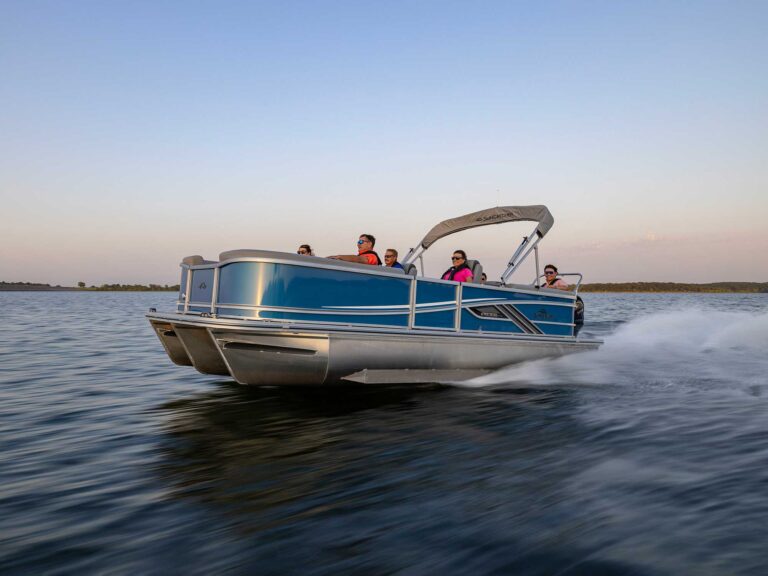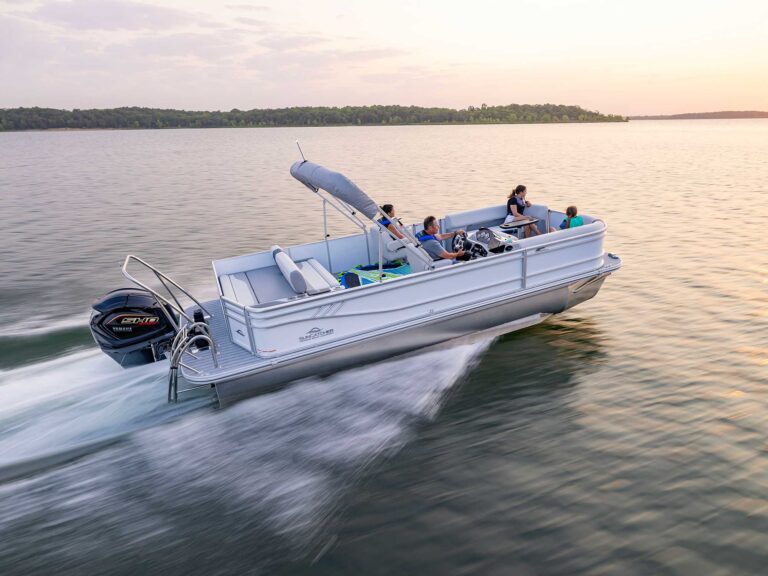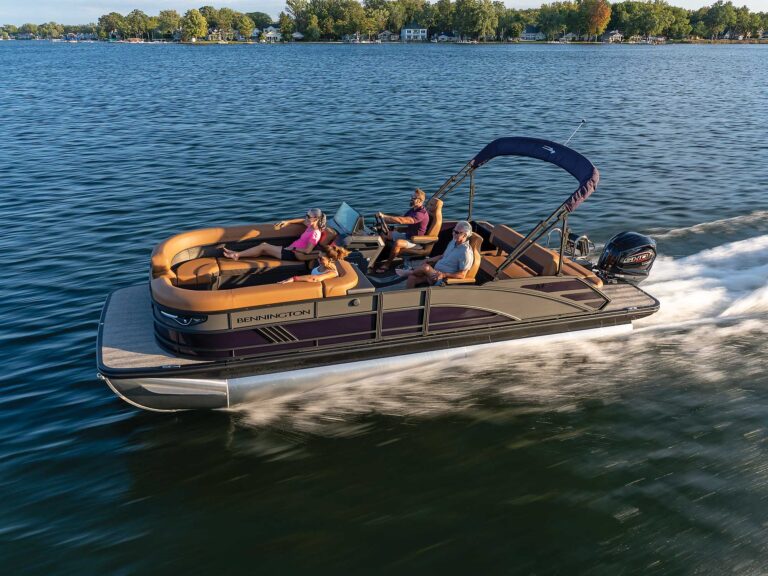Everybody wants to go green these days, so when somebody builds an “eco boat” people start thinking about jumping on the bandwagon. But is it worth it? Decide for yourself. The DSe Hybrid 12m is an electric boat that gets its power from a variety of sources, including a diesel engine. The system that makes, stores, saves, and uses electricity does so as efficiently as possible, but it’s also quite complex. Here’s how it all comes together.
Make It
The DSe (Diesel Solar Electric) is a 39’6″ boat. Its primary electrical system is 48 volts DC (VDC). Shorepower comes from two 30-amp AC cables that lead to 48VDC battery chargers that top off the batteries and supply 7.2kW AC for appliances. Once you unplug from shorepower, DC generated by the batteries goes through inverters, which seamlessly supply the same 7.2kW AC.
The boat also has 375 square feet of solar panels with a maximum output of 6kW at 48VDC. As long as there’s enough sunlight, the panels will constantly maintain the batteries. That said, time of year and day have a major effect. At 2 p.m. on a clear winter day in Florida, we were getting only about a third of maximum solar input. Solar energy peaks when the sun is highest, then steadily—and rapidly—declines. Shadows can also reduce input.
The next source of electricity is twin 75-bhp Steyr Hybrid diesel engines with generator/motors. When running in generating mode each engine produces as much as 5kW of 48VDC. You can run one or both generators, depending on your needs. Each engine also has an alternator to keep its own 12-volt starting battery charged.
Coming soon a pair of 1.5kW wind generators will be installed that spin on a vertical axis, kicking in when the wind surpasses 8 knots.
Store It
The boat’s “fuel tank” is 16 AGM (absorbed glass mat) 12-volt batteries wired to generate 48 volts with a total of 400 amphours. The batteries are in continual use, balancing incoming current with outgoing electrical needs. These batteries have a 500-cycle span. That means you can deplete one battery 500 times, drain it halfway 1,000 times, or anything in between the two. Then it’s off to a certified recycling facility. Better batteries are on the way. The boat’s builder plans to install smaller, lighter, lithium-ion batteries that have a lifespan of 2,000 cycles and double the amphours.
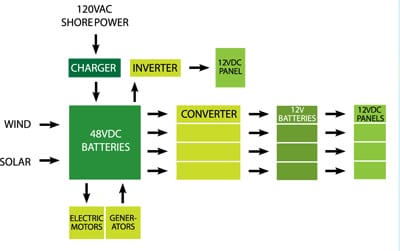
Use It
You have two choices for power: electric or diesel. Electric uses Steyr’s 10-hp electric motors. At full throttle, we topped 7 mph, drawing 175 amps per motor, which gave us 45 minutes of running time. Bring it down to 5.5 mph and you’ll use only 60 amps per motor, which can last three hours. At 4.5 mph each draws 30 amps and can run on solar alone—if there’s good sun. Besides being clean and quiet, electric power has instant peak torque, which is good for docking and perfect offshore when climbing waves.
You can’t switch between electric and diesel on the fly. You have to shut down and “reboot” the system, which takes only a few seconds. Maximum speed with diesel power is 10 mph at 4 gph. The best cruising speed is 8 mph at 1.4 gph. The boat holds 120 gallons of diesel fuel. You can also use the electric motors with the diesels in boost mode for some extra oomph, but the small jump in acceleration and speed didn’t seem worth the increased battery consumption.
Save It
Using 48VDC means less power lost over long wire runs than with 12 volt. Cables from the battery banks forward lead to 48-to-12VDC converters at the four corners of the boat to keep 12-volt runs as short as possible. Cored construction insulates the hull, deck, and cabin. Most lights are LEDs. The refrigerator is a low-draw (35 watts/ 120VAC) model, plus the stovetop uses magnetic waves that are 30 percent more efficient than a standard unit. All these factors conserve energy. When you add it all up, it’s quite impressive, but oh so complicated.

